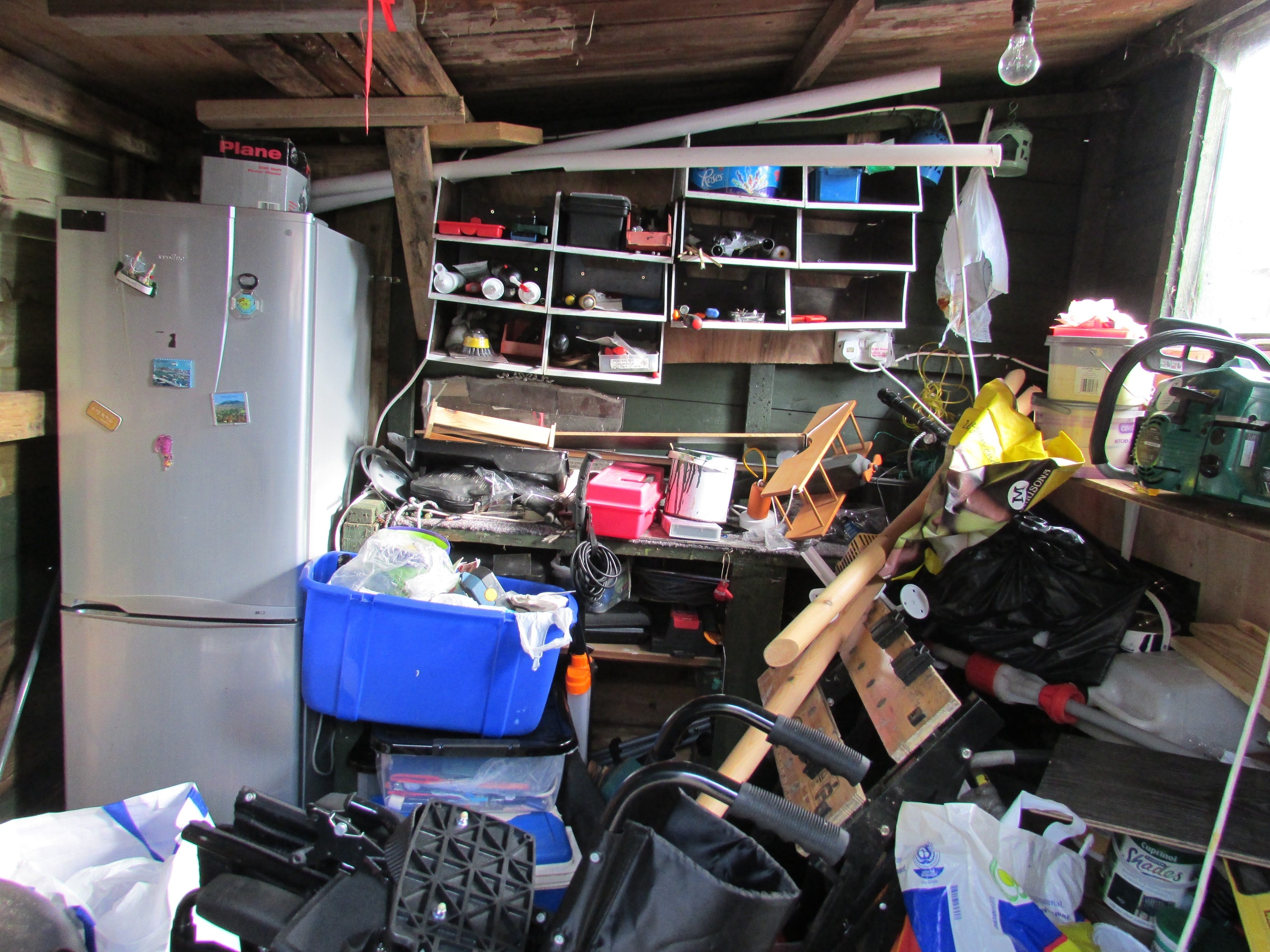
Every one of us has, at some point in our lives, felt that overwhelming urge to declare, “I really need to declutter!” It’s a universal sentiment, isn’t it? Our homes, those cherished sanctuaries, have a peculiar way of accumulating stuff at an astonishing rate. Before we even realize it, we can find ourselves navigating around piles of old magazines, unused gadgets gathering dust, and countless boxes of things we once thought we couldn’t live without.
Decluttering often feels like an endless spring cleaning marathon, a task that never truly concludes. The sheer thought of tackling an entire house can be incredibly daunting, leading to procrastination and a deeper sense of being buried under our possessions. But here’s the encouraging truth: it doesn’t have to be an all-or-nothing endeavor that leaves you feeling exhausted and defeated.
We all need to discover a personal approach to managing our space, one that genuinely works for our unique lifestyles. Just like a personal journey, decluttering can be deeply therapeutic, whether you’re drawn to the serene simplicity of minimalism or simply yearning to reclaim your kitchen countertops. No matter where you stand on this spectrum, there’s a smart, effective method ready to guide you. The good news is, many of these time-tested decluttering rules can be incorporated into your routine in less than ten minutes a day, offering achievable solutions without the overwhelming pressure. We’ve gathered these brilliant insights from trusted professional organizers, decorators, and home experts to provide you with the very best inspiration for truly effective home decluttering.
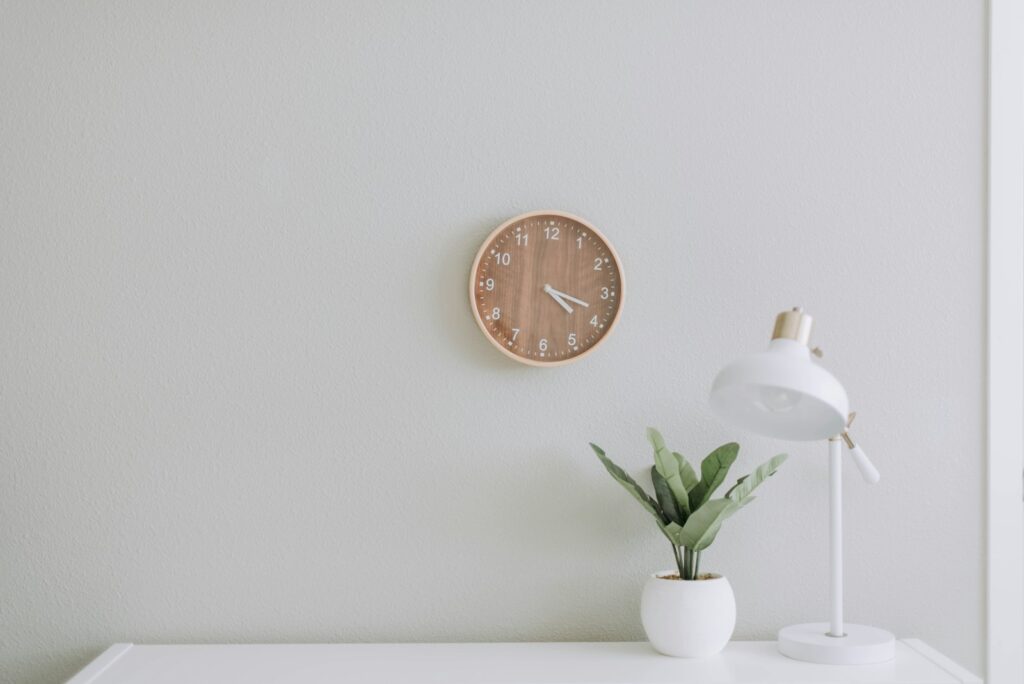
1. **The “One In, One Out” Rule**This simple yet profoundly effective principle is the ultimate strategy for keeping clutter at bay, especially if you find retail therapy a little too tempting. The idea is straightforward: for every single new item you welcome into your home, one existing item must make its exit. It’s a beautifully balanced act that transforms acquisition from an unconscious habit into a deliberate, mindful decision.
This rule effectively turns your home into a revolving door of possessions, ensuring that space remains at a premium and every item earns its place. For instance, if you’ve just invested in a brand-new, shiny blender, it’s time to graciously bid farewell to the old one—perhaps the one that emits a suspicious smoke signal upon ignition. By consistently adhering to this easy-to-follow rule, you’ll skillfully bypass the dreaded accumulation of items that serve no real purpose, yet greedily consume valuable space.
It forces you to pause and thoughtfully consider the true worth and necessity of each potential new addition, prompting you to make conscious choices about what genuinely enriches your living environment. This continuous process of evaluation helps maintain an equilibrium in your space, preventing the insidious creep of excess before it even has a chance to take hold. It’s not about deprivation; it’s about intentional living and valuing quality over quantity.
By embracing the “One In, One Out” rule, you cultivate a mindset of ongoing curation rather than passive collection. This proactive approach ensures your home remains a reflection of your current needs and desires, rather than a storage unit for the past. It simplifies your environment, reduces decision fatigue, and ultimately fosters a greater sense of calm and control over your personal space, making daily life feel much lighter and more manageable.
Read more about: Rosalyn Drexler: A Polymath’s Legacy – Unpacking the Diverse Chapters of an Artistic Whirlwind Who Defied Categorization
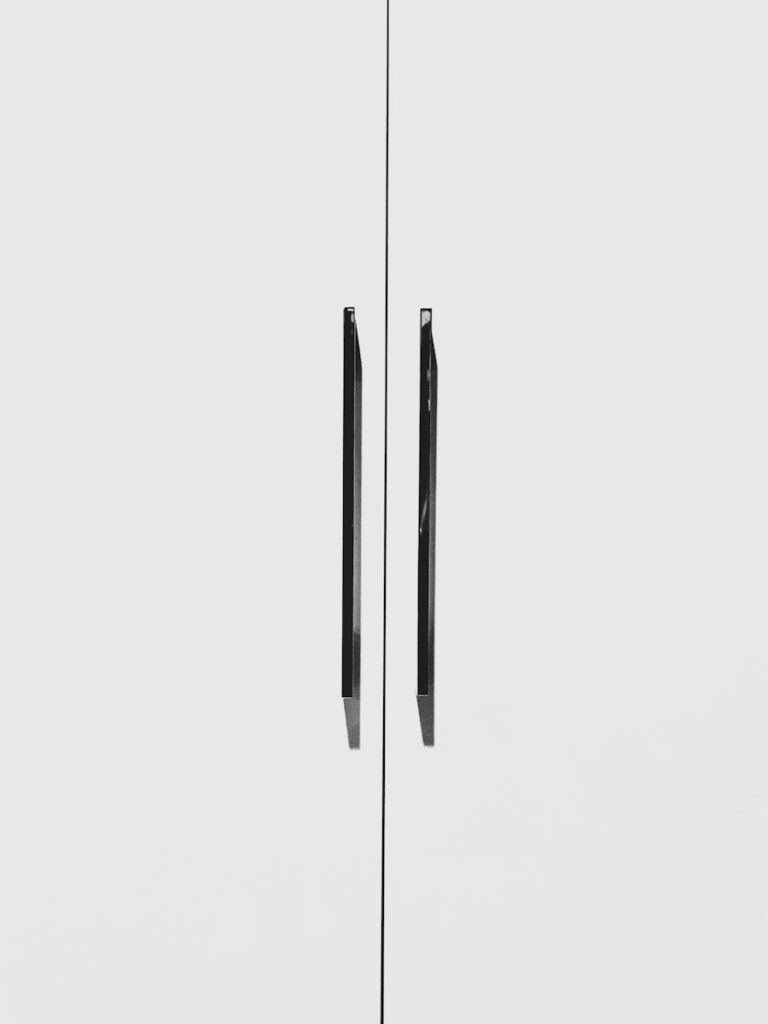
2. **Easiest Place Rule**The sheer thought of decluttering an entire house, from the attic to the basement, is often enough to send anyone fleeing for the hills, feeling utterly overwhelmed before they even begin. That’s precisely why the Easiest Place Rule is so incredibly vital: starting incredibly small is not just helpful, it’s absolutely fundamental to building momentum and confidence in your decluttering journey. It’s about setting yourself up for success, not burnout.
Instead of envisioning the monumental task of a whole-house overhaul, simply pick one incredibly small, manageable space. This could be a single drawer in your kitchen, a solitary shelf in your bathroom, or even just a neglected corner of a room that has seen better days. Focusing all your attention on this tiny area makes the task feel achievable, turning an intimidating project into a series of bite-sized, conquerable challenges. This micro-approach prevents the all-too-common feeling of being paralyzed by the scale of the undertaking.
The magic truly happens when you experience those first few small victories. Clearing out that single messy drawer or organizing one cluttered shelf provides an immediate, tangible sense of accomplishment and visual relief. These little successes are powerful motivators; they don’t just clear a space, they build confidence and demonstrate that positive change is indeed possible. Once you’ve witnessed the transformative effect on even a modest space, it becomes significantly easier to find the motivation to keep going.
You’ll likely be amazed at how quickly the satisfaction from decluttering one small area can ignite a desire to tackle more. That spark of inspiration from a tidy drawer might just be enough to propel you to take on the rest of the kitchen, or perhaps even the garage that’s currently choking in unfinished DIY projects. It’s a testament to how small, consistent actions can lead to much larger, more significant transformations over time, making decluttering a process of empowerment rather than dread.
Read more about: Decoding the $300 Rule: Practical Steps to Finance Your Car Without Financial Strain
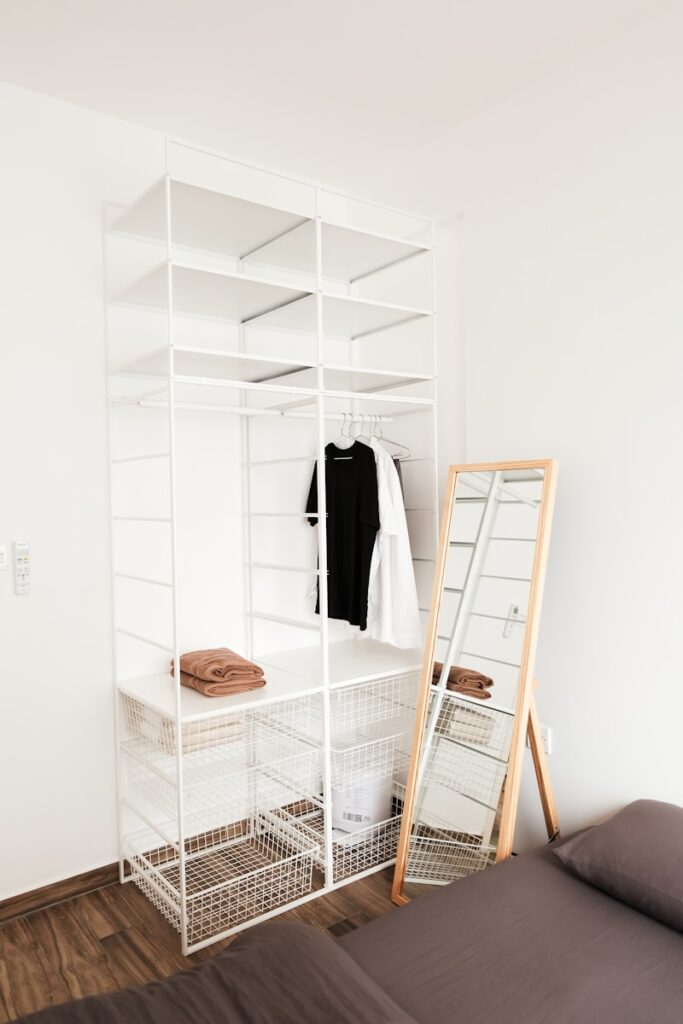
3. **Declutter by Categories, Not Rooms Rule**When faced with a mountain of items, a common inclination is to tackle decluttering room by room. However, a more insightful and often more effective strategy is to declutter by categories of items rather than by physical spaces. This ingenious approach shifts your perspective, allowing you to gain a clearer, more comprehensive understanding of just how much you truly own within a specific type of item, making the decision-making process far more streamlined and efficient.
Imagine starting with all your clothing, pulling every garment out from every closet, dresser, and laundry pile. Then, move on to all your books, gathering them from bookshelves, nightstands, and storage boxes. You can then progress to kitchen gadgets, or perhaps even highly sentimental keepsakes. This method provides an undeniable visual impact, confronting you with the sheer volume of a particular category of items, which can be a powerful catalyst for letting go.
This categorical approach helps to prevent the “I already own one of these” scenario that often happens when you only declutter one room at a time. By seeing all similar items together, you can easily identify duplicates, redundancies, and items that have simply lost their purpose. It creates a complete picture, empowering you to make more informed decisions about what to keep, what to donate, and what to discard, based on genuine need and use, rather than what simply happens to be in front of you at the moment.
Furthermore, decluttering by category can be incredibly revealing, helping you to identify patterns in your consumption habits. For example, as the context points out, do you truly need three different garlic presses if you rarely cook? Recognizing these trends is invaluable, not just for clearing existing clutter, but for actively helping you to avoid accumulating unnecessary items in the future. It’s a proactive step towards more conscious consumption and a truly simplified life.
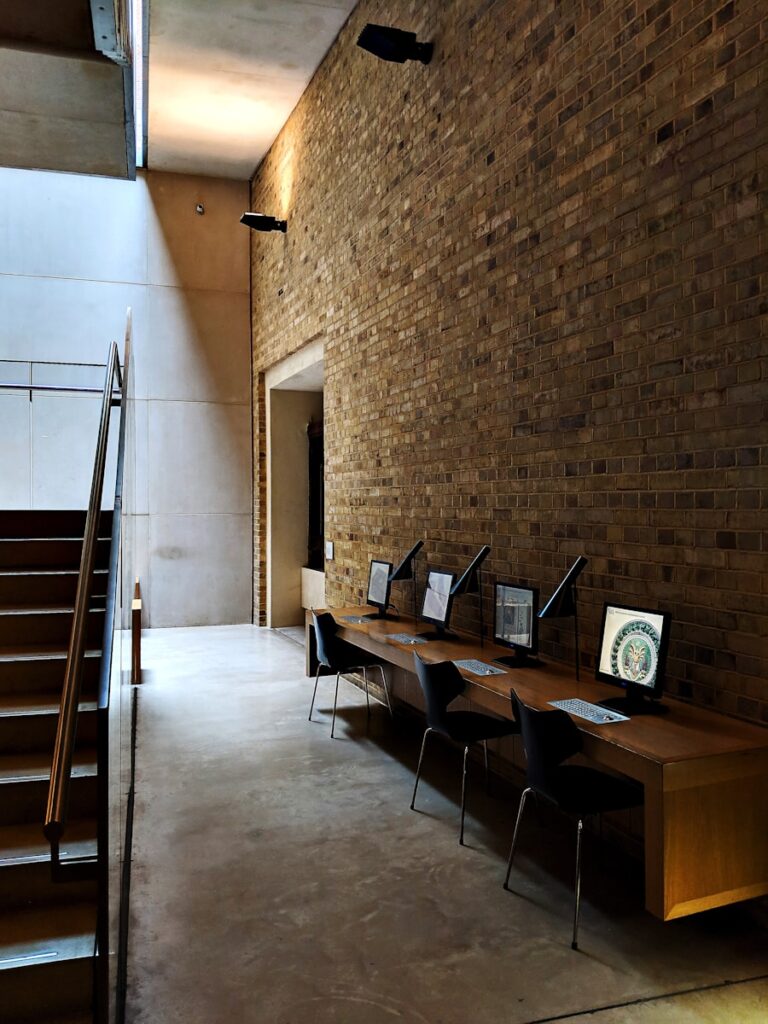
4. **The Poop Rule**Now, here’s a decluttering rule that might sound a little unconventional, perhaps even slightly absurd, but it is surprisingly and oddly effective in its blunt honesty. Imagine this scenario, as presented in the context: if an item were accidentally covered in… well, poop, would your immediate reaction be to diligently wash it, or would you instantly deem it trash and throw it away without a second thought? While the situation is certainly extreme and purely hypothetical, its purpose is brilliantly practical.
This rule is designed to cut through the emotional fog and get you to confront your true feelings about an item. It forces you to be brutally honest with yourself about how much you genuinely value something, stripping away all the “what ifs” and sentimental attachments that often prevent us from letting go. The sheer unpleasantness of the hypothetical scenario acts as a powerful filter, helping you to bypass superficial reasons for keeping things and get right to the core of its importance in your life.
If your gut reaction is that you wouldn’t go to the trouble, mess, and effort of cleaning the item under such circumstances, then it’s a very strong indicator that it probably isn’t worth holding onto in the first place. This intense thought experiment challenges you to weigh an item’s intrinsic importance against the hassle of its upkeep, even in an imagined extreme. It quickly reveals whether an item holds genuine utility or deep sentimental value, or if it’s merely taking up space due to inertia or vague guilt.
Ultimately, the Poop Rule, despite its humorous and extreme premise, is a wonderfully practical and surprisingly efficient way to break free from unnecessary emotional attachments to things you don’t genuinely need or cherish. It’s a quick, decisive mental trick that helps you to make swift, clear-cut decisions, ensuring that only truly valued items remain in your space. It empowers you to declutter with a refreshing level of detachment and objectivity, making the process faster and less emotionally draining.
Read more about: More Than Just Nostalgia: How 90s Infomercials Shaped a Generation and Found New Life in the Digital Age

5. **The “12-Month Rule”**The “12-Month Rule” is a straightforward and highly effective guideline for assessing the true utility of your possessions. Its premise is beautifully simple: if you haven’t found a reason to use something in the past year, the odds are overwhelmingly high that you don’t genuinely need it taking up valuable space in your home. This rule provides a clear, objective benchmark for evaluating the active role an item plays in your current life, moving beyond hypothetical future scenarios.
Of course, there are some sensible exceptions to this rule. Seasonal items, such as your beloved holiday decorations or specialized winter sports gear, are naturally exempt, as their use is inherently cyclical. These items are meant to be stored for a portion of the year, waiting for their designated season to shine. However, for the vast majority of your everyday belongings, a full year of neglect or disuse serves as a very clear and unambiguous sign that it’s time to part ways with the item.
This rule proves particularly effective for a wide array of household items that tend to accumulate without much thought. Think about your wardrobe: those clothes that have lingered unworn in the back of your closet for more than 365 days are prime candidates for donation. The same applies to obscure kitchen gadgets that have seen one-time use, or those random trinkets and decorative items you’ve completely forgotten you even owned. If they haven’t been touched, seen, or needed for months, it’s a strong indication that their presence in your home is more about storage than utility.
The real beauty of the “12-Month Rule” lies in its ability to dismantle the pervasive “just in case” mentality that so often fuels clutter. By establishing a clear time limit, it encourages you to trust that if something has sat untouched for an extended period, you likely won’t miss it once it’s gone. This simple practice liberates both your physical space and your mental energy, allowing you to focus on items that actively contribute to your daily life and bring you genuine joy.
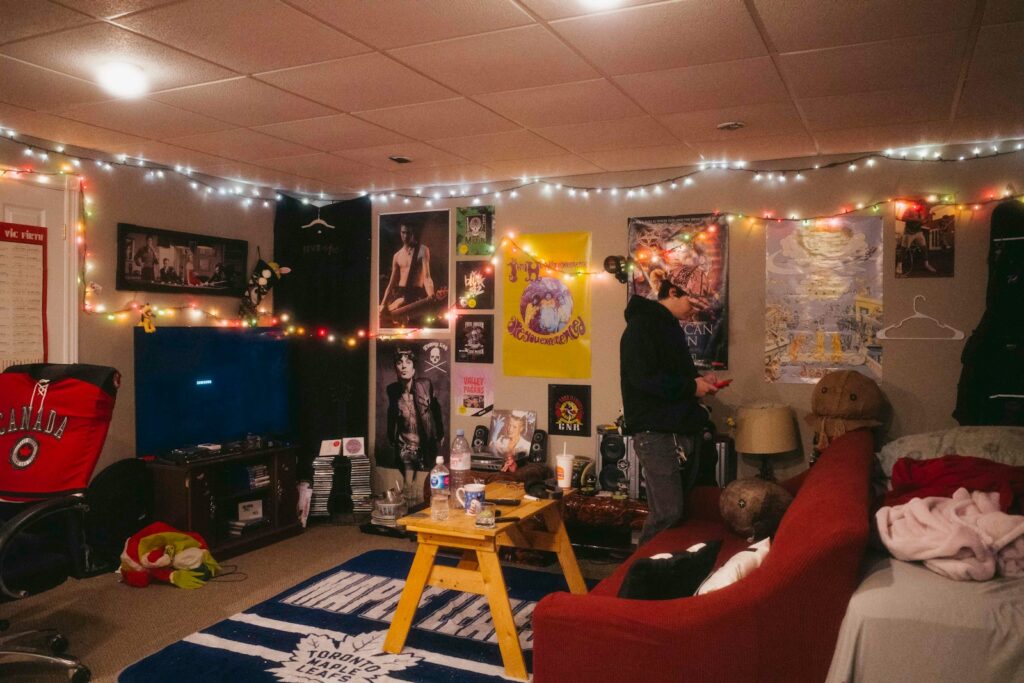
6. **The “Use It or Lose It” Challenge**This challenge is a dynamic and proactive method designed to help you make definitive decisions about those elusive “maybe” items that linger in your home, often creating mental and physical clutter. Instead of letting an item sit in limbo indefinitely, this rule encourages you to pick something you’re unsure about and commit to actively using it within a specific, designated timeframe. This commitment transforms passive indecision into an active test of an item’s true value and relevance in your life.
To implement this, you might create a designated “maybe box” or an “uncertainty shelf” for these items. Once an item is placed there, the clock starts ticking. If, by the end of the set period—be it a week, a month, or even a season—the item remains untouched and unused, then the decision becomes clear: it’s time to let it go. This tangible deadline forces you to confront the item’s practical worth rather than allowing it to occupy valuable space based on vague future potential.
This rule is especially potent for categories like kitchen gadgets that were once exciting but now rarely see the light of day, craft supplies bought with good intentions but never opened, or that piece of exercise equipment that serves more as a coat rack than a fitness tool. By giving these items a final chance to prove their usefulness, you eliminate the excuses and the lingering guilt associated with holding onto things that don’t actively serve you.
Ultimately, the “Use It or Lose It” Challenge provides a decisive framework for evaluation. Either you’ll rediscover its value and integrate it back into your routine, or you’ll come to the empowering realization that it’s merely cluttering your life, freeing you to release it without regret. It’s a powerful tool for promoting conscious consumption and ensuring that everything in your home is truly earning its place and contributing to a more functional, simplified living environment.
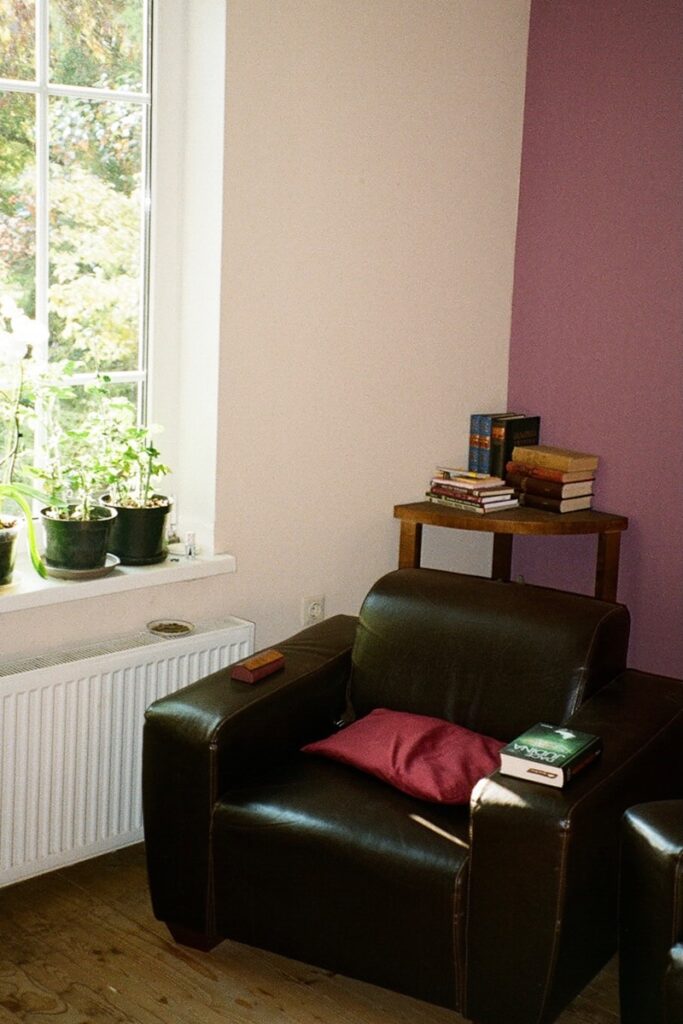
7. **Give Every Item a Home Rule**One of the most insidious culprits behind persistent clutter isn’t always the sheer volume of items we possess, but rather the lack of a designated resting place for those items. When objects don’t have a specific home, they tend to drift, settling on countertops, tables, and floors, creating chaotic piles and a perpetual sense of disarray. This fundamental rule addresses that core issue: assign every single item in your home to its own specific, logical place. This practice is foundational to maintaining order and significantly reduces the daily battle against mess.
When you commit to giving every item a home, you’re not just organizing; you’re creating a robust system that inherently prevents clutter from accumulating. Imagine how much time and frustration you’ll save when you no longer have to hunt for your keys, your charging cable, or that frequently used pen because they consistently return to their designated spots. This simple habit transforms your home into a more efficient and peaceful environment, where everything has its purpose and its place, minimizing mental friction.
Beyond the immediate benefits of reduced mess and saved time, this rule offers a powerful secondary advantage: it makes spotting what doesn’t belong incredibly easy. When an item is out of place, it immediately stands out against the backdrop of an organized system. This visual cue acts as an instant prompt to either return the item to its home or, if it doesn’t have one, to question why it’s there at all. It’s a self-correcting mechanism for your home’s order.
Furthermore, giving every item a home can be a fantastic way to assess if you own duplicates of things you truly only need one of, or if you’re holding onto unnecessary items that simply don’t fit into your curated system. It helps to clarify the crucial distinction between needing to declutter (getting rid of excess) and simply needing to organize (arranging what you’ve decided to keep). By consciously creating a home for everything, you create a home that is truly functional, peaceful, and beautifully simplified. This systematic approach fosters a profound sense of control and calm, transforming your living space into a haven of order.
Now that we’ve established the groundwork for managing the flow of items in and out of your home and setting up foundational organizational habits, it’s time to delve into more advanced strategies. These methods are designed not only to help you clear existing clutter but also to foster a sustained, positive mindset towards maintaining a simplified and efficient living environment. Moving beyond the initial cleanup, these rules will equip you with tools to solidify your decluttering efforts, ensuring long-term success and a truly peaceful home.
Read more about: Pedal to the Metal: 14 Classic Rock Gods Who Fueled Your First Wild Rides and Open Road Dreams!
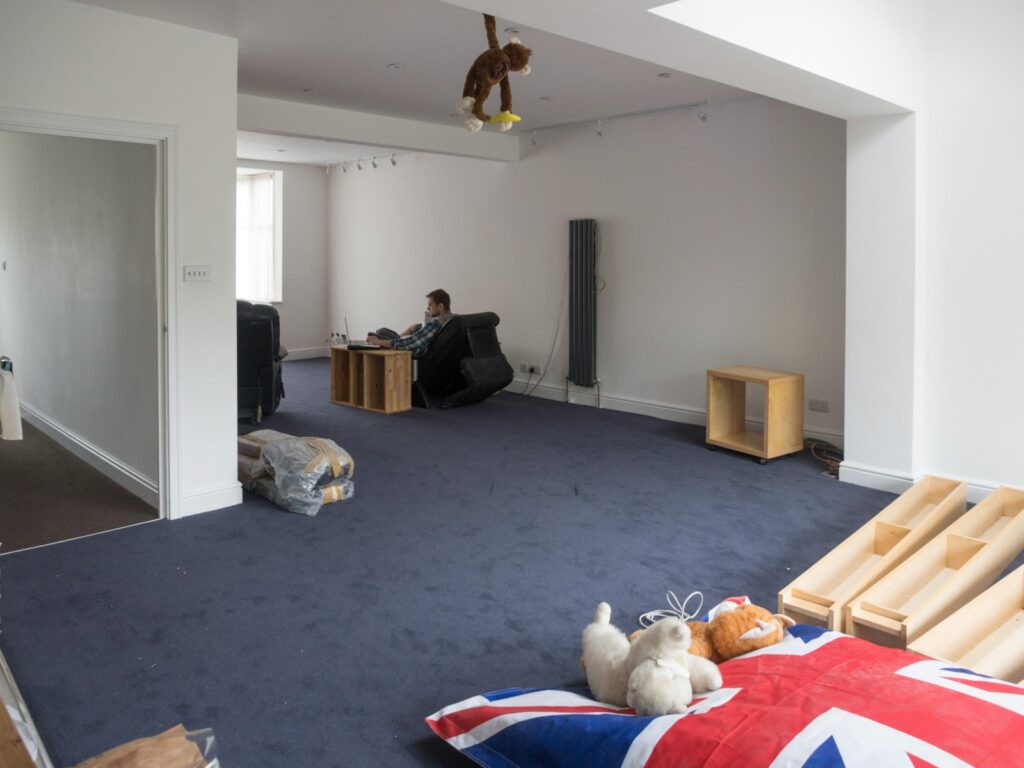
8. **The Decluttering Timer Rule**It’s a familiar scenario for many: you set aside an entire day with the best intentions to declutter, only to find that by sunset, very little, if anything, has been accomplished. The sheer scale of the task can be paralyzing, leading to procrastination. This is precisely where the Decluttering Timer Rule steps in, offering a remarkably effective antidote to overwhelm: dedicate a focused, short burst of time, typically 15 to 30 minutes a day, specifically to decluttering.
Setting a timer creates an immediate, palpable sense of urgency, which helps you stay acutely focused on the task at hand. Instead of staring at a room-sized mountain, you’re looking at a manageable hill that you can conquer before the timer rings. These short, concentrated sessions are designed to chip away at clutter in achievable increments, preventing that all-too-common feeling of being completely submerged and defeated by the magnitude of the job.
The real magic of this micro-decluttering approach is its cumulative power. Small, consistent efforts, meticulously applied day after day, can yield surprisingly significant results over time. It transforms decluttering from an intimidating, open-ended project into a series of bite-sized, conquerable challenges. This flexibility makes it an ideal rule for anyone with a packed schedule, proving that even the busiest among us can make tangible progress toward a more organized home without ever feeling overwhelmed.
Read more about: Unlock Your Potential: 15 Simple Yet Powerful Productivity Hacks You Can Master Today

9. **No Clutter Zone Rule**Imagine having at least one sanctuary within your home—a designated area that remains impeccably clear, no matter what chaos might swirl around it. This is the essence of the No Clutter Zone Rule. The idea is wonderfully simple yet profoundly impactful: select a single, highly visible surface in your home, perhaps your dining table, a prominent kitchen counter, or even your bedside table, and commit to keeping that space absolutely clear of clutter at all times.
This deliberate commitment to maintaining one pristine area immediately fosters a sense of order and calm within your environment. It acts as a daily, tangible reminder of the profound benefits of decluttering, offering instant visual relief and a small pocket of peace. This isn’t just about aesthetics; it’s about creating a psychological anchor that reinforces your decluttering journey.
Once you begin to experience the undeniable goodness that comes from having even one consistently clear surface, you’ll likely find yourself inspired to expand that feeling of spaciousness and order to other areas of your home. That initial small commitment often snowballs into a desire for broader transformation, nudging you towards a more comprehensively clutter-free home without the feeling of having to undertake a massive, daunting overhaul.
Read more about: The Definitive Guide: 14 Life-Changing Tech Gadgets Under $100 That Deliver Exceptional Value and Innovation
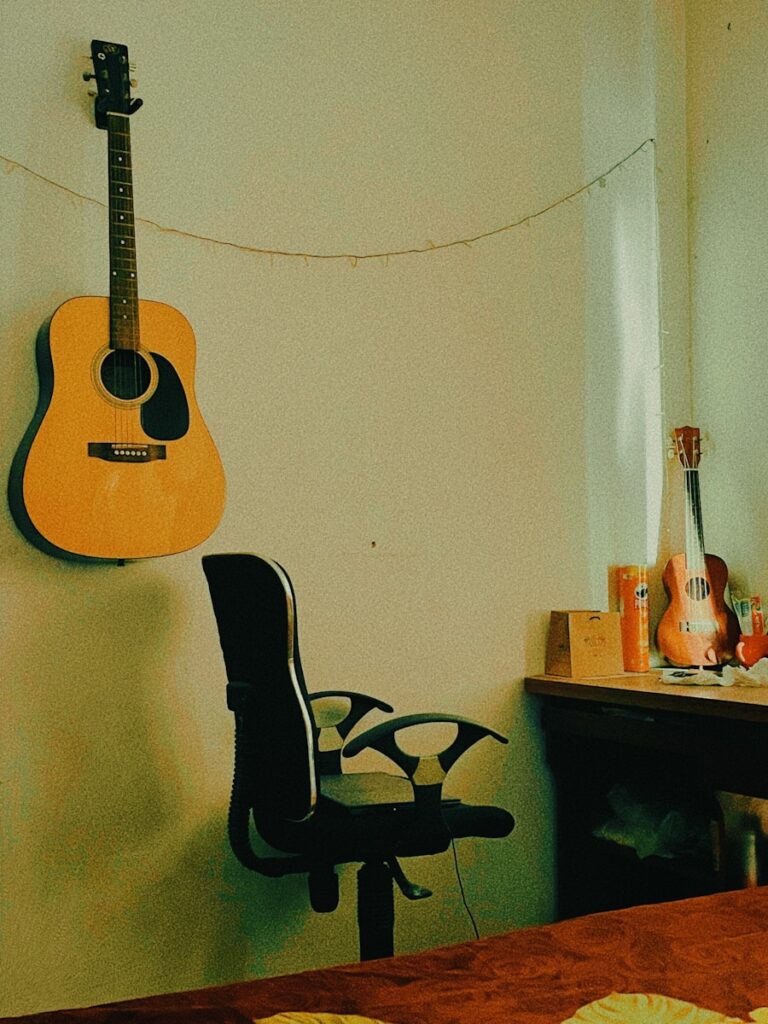
10. **Digitize What You Can**Paper clutter is an almost universal antagonist in the battle against household mess. From important documents and bills to sentimental photos and bulky instruction manuals, physical paper can rapidly accumulate and consume valuable space. The ‘Digitize What You Can’ rule offers a powerful modern solution: convert as much of this physical information into digital formats as possible, freeing up your physical surroundings and streamlining your access to information.
This means scanning important documents and storing them securely online or on a hard drive, transforming boxes of printed photos into easily searchable digital albums, and replacing physical user manuals with their digital counterparts. The immediate benefit is a significant reduction in physical clutter, but it also makes organizing and retrieving information far more efficient and less stressful. Imagine finding that specific utility bill or treasured family photo with just a few clicks, rather than sifting through overflowing folders.
Beyond utilitarian items, this rule extends to cherished sentimental objects. You can digitize children’s artwork, heartfelt handwritten letters, or even old journals by simply taking high-resolution photographs or scans. While it might feel a little strange at first to part with the physical original, remember that the true value of a memory or a piece of art lies in the sentiment and the image itself, not necessarily in the physical paper or canvas it occupies. Embracing digitization allows you to retain access to these memories without them consuming precious square footage.
Read more about: Unlocking the Mystery: Why Your Car Key Fob Replacement Can Cost Hundreds of Dollars
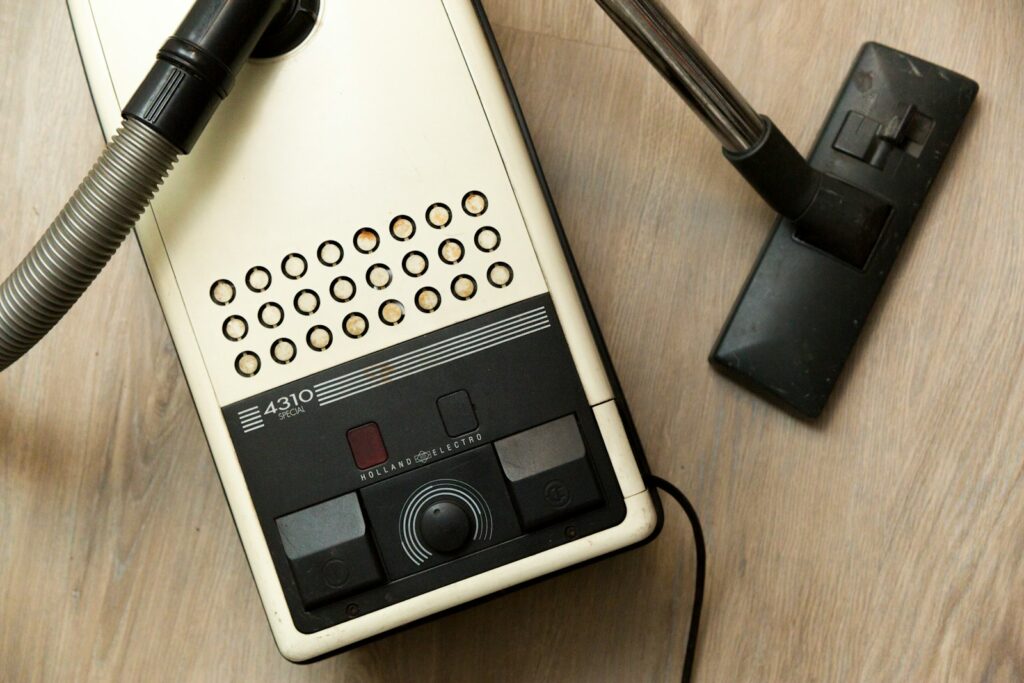
11. **The “Four-Box Method”**When you’re facing a daunting pile of items you no longer need, it’s easy to feel stuck, wondering what to do with everything. The “Four-Box Method” provides a clear, systematic, and highly effective framework to navigate this challenge, preventing that all-too-common decision fatigue. This practical approach involves creating four distinct categories, each with a designated box or area, to guide your sorting process: Keep, Donate, Trash, and Relocate.
As you go through your items, you simply assign each one to its appropriate category. The ‘Keep’ box is for items that truly serve a purpose and bring you joy. The ‘Donate’ box is for things that are still in good condition but no longer needed by you, destined for a new life with someone else. The ‘Trash’ box is for anything broken, expired, or unusable. Finally, the ‘Relocate’ box is for items that belong in a different room or even outside your home, like a tool that belongs in the garage but found its way into the kitchen.
This method streamlines the entire decluttering process, making it faster and helping you stay focused. By having clear categories, you’re less likely to get sidetracked or overwhelmed by indecision. Furthermore, seeing the growing piles in the ‘Donate’ and ‘Trash’ boxes can be incredibly motivating, providing a tangible representation of your progress and the space you’re reclaiming. It creates a definitive action plan for every item, ensuring that once it’s sorted, you know exactly what its next step is.

12. **The Two-Minute Rule**Clutter often isn’t born from a single monumental mess, but from a relentless accumulation of tiny, ignored tasks. The “Two-Minute Rule” is a brilliant strategy for intercepting this insidious creep of disarray by tackling small jobs before they have a chance to snowball. The premise is elegantly simple: if a decluttering task takes two minutes or less to complete, do it immediately, without hesitation.
Think about the myriad micro-tasks that contribute to a perpetually messy home: tossing junk mail, hanging up a coat instead of draping it over a chair, returning a stray coffee mug to the kitchen sink, or wiping down a spill right when it happens. Individually, these tasks are negligible. Collectively, when ignored, they create an overwhelming sense of disorder. This rule empowers you to address them in the moment, making them vanish before they can even register as ‘clutter’.
By consistently applying this straightforward habit, you actively prevent small bits of mess from escalating into bigger, more intimidating problems. It’s a subtle but powerful shift in your daily routine that maintains your space in a tidier state without ever feeling like a massive, exhausting effort. The immediate satisfaction of completing these quick wins not only keeps your home more organized but also builds momentum and motivates you to sustain these positive habits.
Read more about: Prince Rogers Nelson: A Comprehensive Retrospective on the Life and Musical Legacy of a Global Icon
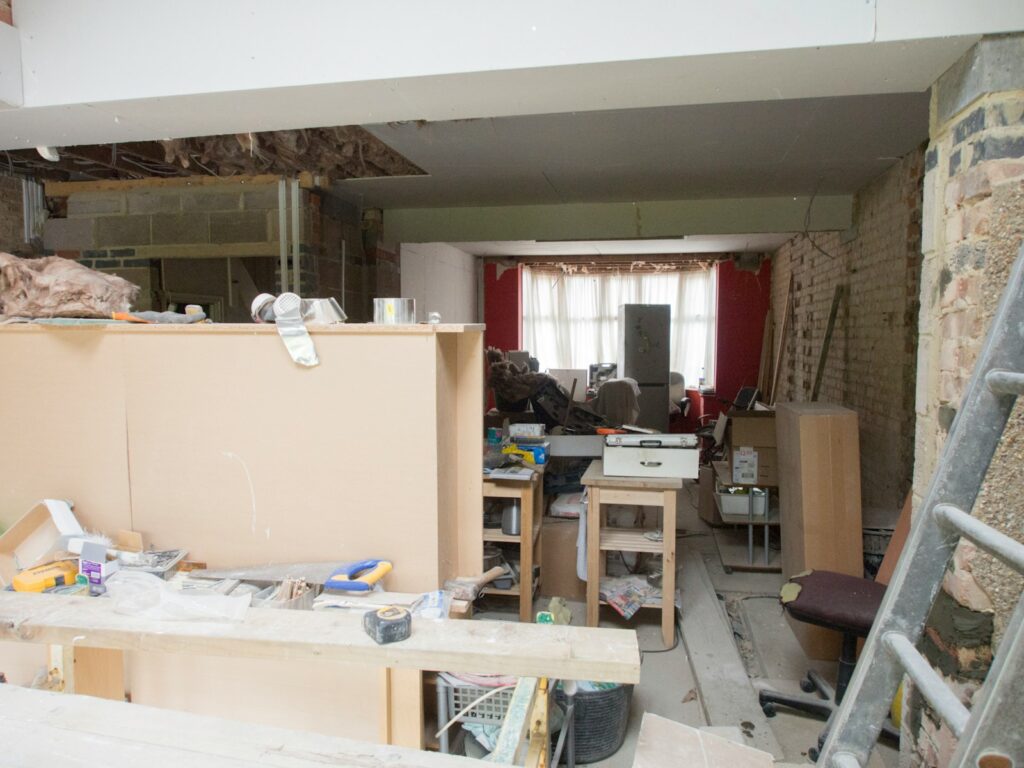
13. **The 90/90 Decluttering Rule**For those grappling with the pervasive “but I might need it someday” mentality, the 90/90 Decluttering Rule offers a swift and effective mental filter. Developed by The Minimalists, Joshua Fields Millburn and Ryan Nicodemus, this rule challenges you to ask two very specific questions about any item you’re considering keeping: “Have you used this item in the past 90 days?” and “Do you realistically expect to use it in the next 90 days?” If the answer to both questions is a resounding no, then it’s a clear signal that it’s likely time to part ways with the item.
This powerful rule is designed to cut through the emotional fog and speculative future scenarios, forcing you to focus on the item’s practical, current value in your life. It encourages a decisive, objective assessment, rather than allowing items to linger indefinitely based on vague potential. This intentional focus on recent and near-future utility helps to break the cycle of holding onto things out of fear or an imagined future need that rarely materializes.
As Jamie Hord, founder of Horderly Professional Organizing, explains, asking these ‘hard questions’ puts things into perspective and provides an easy-to-follow timeline. The 90/90 rule acts as a quick mental filter, allowing you to make decisions instantly, free from guilt or confusion. It’s particularly effective at transitional times, like the change of seasons or before the holidays, when assessing seasonal decor or pantry items can lead to significant decluttering wins, as serial hoster Punteha van Terheyden highlights.
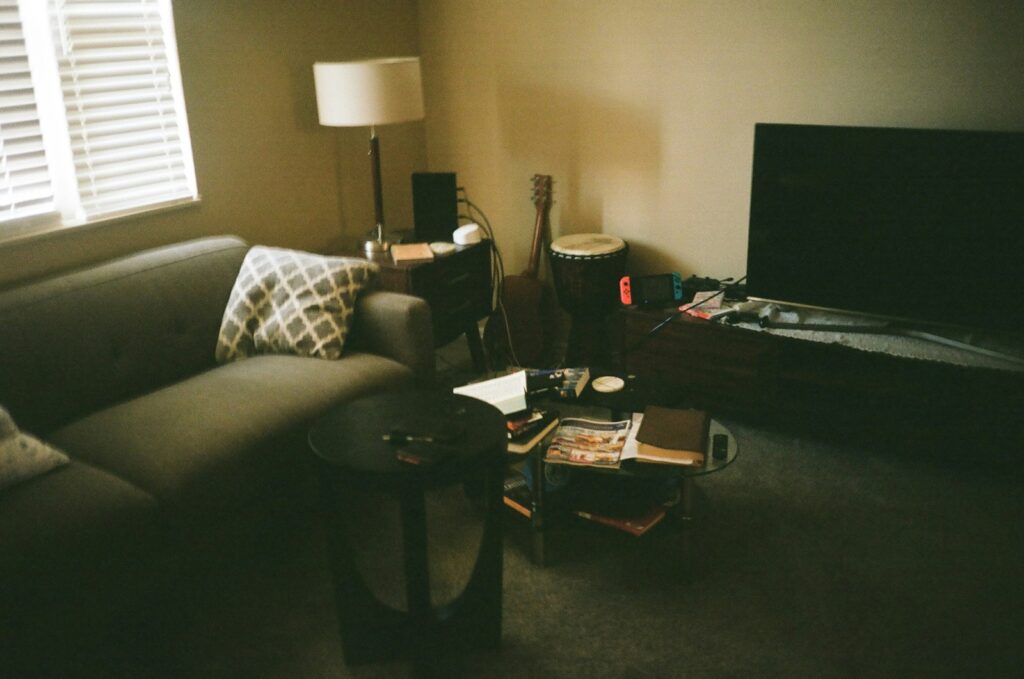
14. **Know Your Why**Before you dive headfirst into the physical act of decluttering, take a crucial moment to pause and reflect on your deepest motivations. This isn’t just about clearing space; it’s about connecting your actions to your personal values and long-term goals. Ask yourself: Why are you doing this? Are you longing to cultivate a calmer, more serene home environment, free up space for hobbies and activities you truly cherish, or simply make your daily routines feel easier and less stressful?
Understanding your ‘why’ infuses the entire decluttering process with purpose, transforming it from a mere chore into a meaningful endeavor. This clear sense of direction becomes your compass, guiding you through tough decisions and helping you prioritize what truly matters. When you link decluttering to tangible outcomes—like having a welcoming home for guests, a functional kitchen for cooking, or a closet that makes morning routines stress-free—it becomes significantly easier to let go of items that no longer align with those desired realities.
Clinical psychologist Priyamvada Tendulkar emphasizes that every object in your home should feel ‘value-consistent’ for you. For instance, if family history and tradition are paramount, you might cherish an heirloom cookbook, while someone valuing health and creativity might prefer a cookbook focused on novel vegetable recipes. Defining these value-consistent goals for your space helps sustain motivation and clarifies priorities when values conflict, ensuring your choices bring you closer to the home and life you envision.
Read more about: 12 Mind-Blowing Facts About Stars That Will Make You Look Up (Literally!)
As we’ve explored, decluttering first makes your home feel more open and spacious, setting the tone for a truly calm and festive atmosphere, whether you’re preparing for a special occasion or simply seeking everyday tranquility. An organized space fosters a greater sense of control and undeniably influences a more positive mindset, leading to a life that’s more about nourishment and expression than consuming and drudgery. Begin today, even with just a small step, and feel the profound lift that subtraction delivers, guiding you toward a home that truly pulls you forward rather than holding you down.



